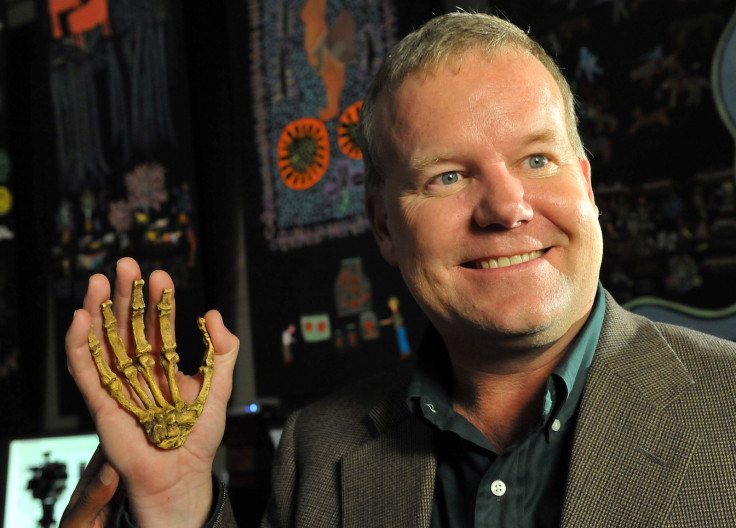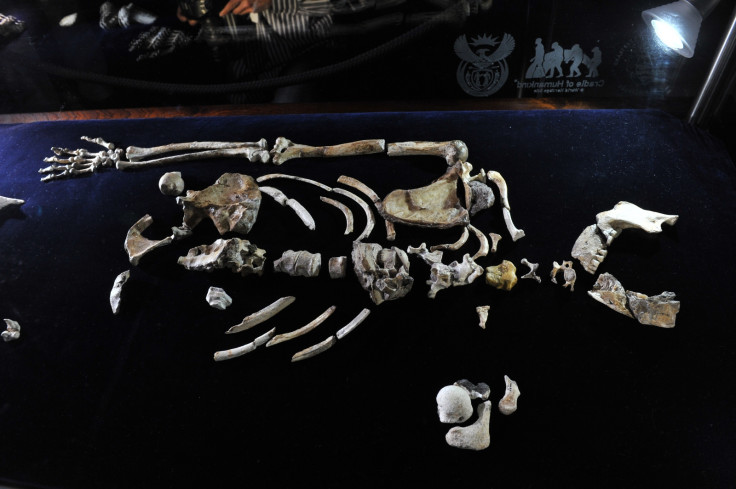South Africa: Early human skin found on 2 million-year-old fossils

Anthropologists say they have discovered human skin belonging to 2 million year-old fossils in the remains of six ancient skeletons found in South Africa.
The tissue is thought to be from the species Australopithecus sediba, thought to be an early human ancestor that has a mix of primitive and more advanced features.
It is a transitional species between Australopithecus species – the first species to walk upright – and early Homo species, of which humankind is the latest form.
The discovery may be the oldest skin ever found, and could even hold the key to valuable details about early humans' lives. Organic materials including the remains of their last meals were found between their teeth, potentially giving an insight into their diet.
Experts made the discovery in a cave near Johannesburg, which has been excavated since a 4' 2" male skeleton was found in 2008.
Professor Lee Berger, an anthropologist at the University of Witwatersrand in Johannesburg, told the Naked Scientists radio show: "We found out this wasn't just a normal type of rock that they were contained in – it was a rock that was preserving organic material.
"Plant remains are captured in it – seeds, things like that – even food particulates that are captured in the teeth, so we can see what they were eating.
"Maybe more remarkably, we think we've found fossil skin here too."
The investigation started after the professor's then 9-year-old son spotted a fossilised bone at the Malapa Nature Reserve site in 2008 – the first discovery of the new species.

They later excavated more bones, as well as an almost complete skull, before making the discovery public in 2010.
Scientists decided to build a laboratory on the spot in order to protect the "remarkable" fossils, including a platform that allows them to take off large pieces of the site to work on them in the laboratory.
Professor Berger says he has no idea how many more human fossils he may find.
"Every time we open up a little bit of rock here and move a little bit of dirt, we see someone new," he said. "We're introduced to another one of these people that died 2 million years ago."
The site will now be turned into a live laboratory, where members of the public can look down into the cave and see excavations in process.
According to research, the former "people" would have walked on two legs, but been "strikingly" short.
"Until they got closer, you probably wouldn't realise what's bothering you but something would bother you," Berger said. "They would probably only be standing about 1.3 metres tall. They also been more lightly built… They had longer arms than we do, more curved fingers. So, they're clearly climbing something. They also would've moved a little different.
"Their hips were slightly different than ours and their feet are slightly different. So, their gait would've probably been a more rolling type gait, slightly different from the more comfortable long distance stride we had.
"As they got closer to you, you'd be struck by for the most obvious thing which would be, their heads are tiny. If you imagine, you take a man's fist and curled it up, that's about the size of their brain and that would strike you. There'd be almost this pinhead on top of this small body. And that would immediately make you recognise that this is not a human."
© Copyright IBTimes 2025. All rights reserved.





















